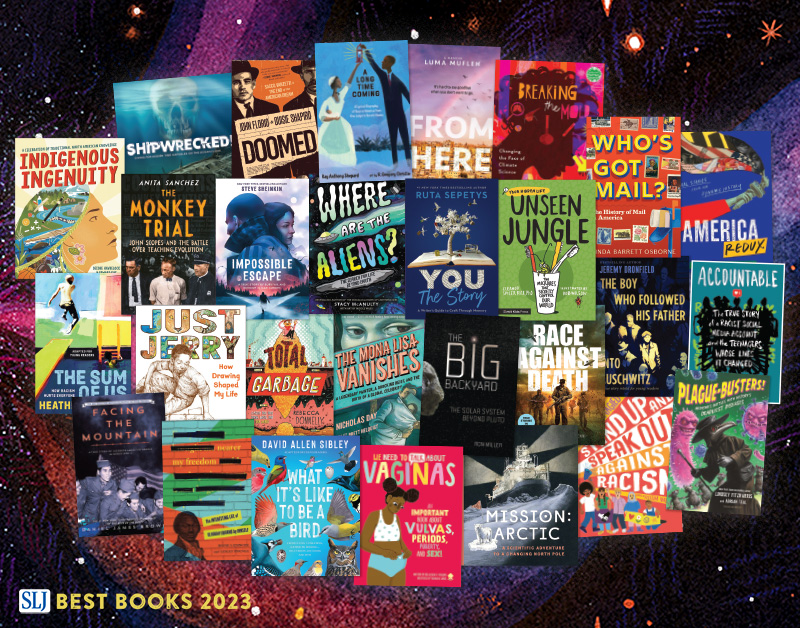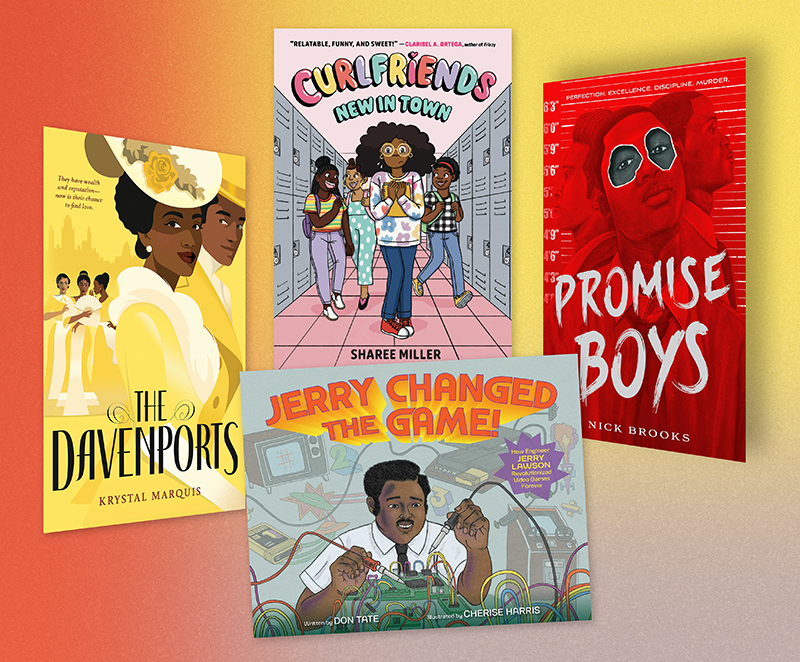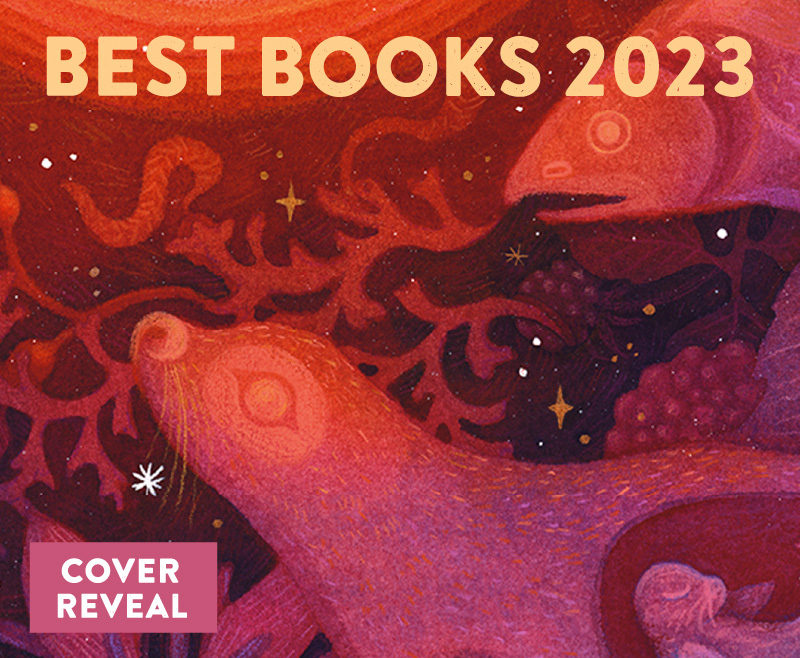Review of the Day: My Letter to the World by Emily Dickinson
 My Letter to the World and Other Poems
My Letter to the World and Other Poems
By Emily Dickinson
Illustrations by Isabelle Arsenault
Visions in Poetry (an imprint of Kids Can Press)
$17.95
ISBN: 978-1-55453-103-5
Ages 9 and up
On shelves October 1st
The great children’s collections of Emily Dickinson’s poems… I’m sure they exist. They’d have to. We’re talking about one of the greatest (THE greatest?) American poets to put pen to paper. It would be patently ridiculous if there weren’t a couple collections for kids out there. A quick search of my library’s catalog and I see things like Poems for Youth which collected seventy-eight of her poems alongside illustrations, published in 1996. Or there was A Brighter Garden with illustrations by Tasha Tudor, which came out in 1990 with Philomel. Still, when all is said and done the Dickinson poetry section of my children’s room looks a bit spare. And maybe it takes something a little shorter like My Letter to the World and Other Poems, produced by Kids Can Press’s Visions in Poetry series to capture children’s attention. A slim volume of a mere seven poems, this introduction to Emily Dickinson will lure in new fans with the woman’s innate sense of mystery. Accompanied by illustrator Isabelle Arsenault’s signature style, this book that will offer children an Emily finally worth getting to know.
ADVERTISEMENT
ADVERTISEMENT
The seven poems in this book include Dickinson’s best-known work. “I’m Nobody! Who are you?” snuggles up alongside “Because I could not stop for Death – He kindly stopped for me-” And from the first gessoed page that sports the titular opening poem to the well-known “ ‘Hope’ is a thing with feathers” found at the end, the book invokes Dickinson’s life. Arsenault’s mixed media works in watercolors, paints, inks, newsprint, photographs, you name it. But rather than give the book a crazed slapdash appearance, the images are cool and collected. They work seamlessly with the poetry, offering sparing jolts of color whenever you least expect it. This is not your standard Dickinson fare, a fact which gives you all the more reason to purchase it for a kid you know pronto.
Recently I saw the actor Simon Callow perform Shakespeare’s sonnets in a newly established order that told a kind of story. If a person had half a mind to, they could certainly do the same kind of performance with Dickinson’s poetry as well. In fact, as I was reading My Letter to the World I tried to ascertain if the editors and illustrator were consciously attempting that kind of storyline. The transition between “I cannot live with you” to “ ‘Hope’ is a thing with feathers,” suggests at a kind of continuity, but that may just lie within the brain of the reader. I guess that one of the things I appreciated about this book was that if you were looking for some kind of a tale (and I’d say a large percentage of your child readers will be) then you could probably find one here. If, however, you found such a notion unpleasant then you could simply say that these poems were placed together due to a pleasing continuity and not some grossly forced narrative. However you chose to look at it, I’m just grateful that they ended with the “hope” poem. Maybe you think that was a given, but considering the subject matter of the previous poems, it makes sense to end on a mildly lighter note.
 Americans love outsider art. I think it appeals to our sense of art as something spontaneous and wild, growing up in unconventional areas. To call Dickinson “outsider” because she wrote primarily (though not exclusively) for herself may sound like a bit of a stretch but it’s not wholly inaccurate. In fact, the real problem may come in considering her not outsider enough. There is a danger inherent in any Dickinson collection for kids; the possibility that the editors will present her as twee. This is not a cutesy writer. Sure, she wrote little poems that begin with sentences like, “I’m Nobody! Who are you?” with their misleadingly sweet overtones. A little delving, though, and you begin to see how dark even Dickinson’s lightest work was. That’s where Isabelle Arsenault comes in.
Americans love outsider art. I think it appeals to our sense of art as something spontaneous and wild, growing up in unconventional areas. To call Dickinson “outsider” because she wrote primarily (though not exclusively) for herself may sound like a bit of a stretch but it’s not wholly inaccurate. In fact, the real problem may come in considering her not outsider enough. There is a danger inherent in any Dickinson collection for kids; the possibility that the editors will present her as twee. This is not a cutesy writer. Sure, she wrote little poems that begin with sentences like, “I’m Nobody! Who are you?” with their misleadingly sweet overtones. A little delving, though, and you begin to see how dark even Dickinson’s lightest work was. That’s where Isabelle Arsenault comes in.
Now this Visions in Poetry series produced by Kids Can Press has been pairing hip, alternative, and generally magnificent artists alongside classic poems for a couple years now. It’s hard to forget Joe Morse’s inner city Casey at the Bat or the stunning take on The Owl and the Pussycat attempted by Stephane Jorisch. That the producers of this series selected Ms. Arsenault, an artist of the adult persuasion, is notable. Arsenault’s style is by turns bleak and thoughtful, stunning and contemplative. Her previous children’s book, Mr. Gauguin’s Heart was released in the United States just last year as her children’s debut. So what I found I admired most about her work on this book was her rejection of the sentimental. I am not saying that her style precludes emotion, but rather that she clearly “gets” Dickinson. Somehow this artist and this author belong together. See if you don’t agree.
At the end of each Visions in Poetry title there is a lengthy biography of both the poet and the illustrator. Sometimes when it comes to the latter you can find yourself wondering just how much of the information there was provided by the artist and how much was extrapolated by the editors. For example, in the case of Ms. Arsenault there is a great deal of attention paid to her visual symbolism and references. I did not know that Dickinson was prone to wearing a lot of white, but Arsenault makes certain to include all pictures of Emily in this book in dresses of that color. But then there are sentences like, “The twin-towered cathedral and ominous shadow in ‘There’s a certain Slant of light,’ eerily suggestive of the events of 9/11,” that give me pause. I guess I can read that interpretation into the work if I want to, but was that the artist’s real intent? The editor certainly thinks so but on this and other notes I should like a little additional confirmation, please.
When Poetry Month rolls around my library will be swamped with kids holding up their school assignments. Some of them will be assigned Emily Dickinson, or maybe just one of her poems. How satisfying it will be to hand then My Letter to the World. Oh sure, they’ll probably wrinkle their noses at the odd professionalism of the packaging. A smyth sewn caseboard? Puh-leeze. But after some trial and error they will see how engrossing, or at the very least stimulating, this Arsenault/Dickinson combo can be. I can’t claim that My Letter to the World will convert your reluctant readers into poetry-popping addicts, but at the very least it won’t turn them off the woman. And who knows? Maybe they’ll even find themselves reading and rereading a line here and there, just to taste the flavor of it. A great new addition to the Visions in Poetry series and an artist worth keeping an eye on.
Other Blog Reviews: Big A little a and Booksweet
Other Web Reviews: Open Book Toronto (curiously similar to the Booksweet review)
Misc:
-
It’s been nominated for inclusion on BBYA.
-
Poetry Friday, y’all. Biblio File has the round-up.
Filed under: Reviews
About Betsy Bird
Betsy Bird is currently the Collection Development Manager of the Evanston Public Library system and a former Materials Specialist for New York Public Library. She has served on Newbery, written for Horn Book, and has done other lovely little things that she'd love to tell you about but that she's sure you'd find more interesting to hear of in person. Her opinions are her own and do not reflect those of EPL, SLJ, or any of the other acronyms you might be able to name. Follow her on Twitter: @fuseeight.
ADVERTISEMENT
ADVERTISEMENT
SLJ Blog Network
The Moral Dilemma of THE MONSTER AT THE END OF THIS BOOK
Winnie-The-Pooh | Review
Parsing Religion in Public Schools
ADVERTISEMENT








It would be entirely in the spirit of Dickinson’s mischief also to slip them “The Mouse of Amherst” while whispering that “Because I could not stop for death” can be sung to the tunes of “Amazing Grace,” “The Yellow Rose of Texas,” and the theme to “Gilligan’s Island.”
So excited to check this out! Will file it under “about time” for now.
Thanks for the review.
Oh, yes, I’d definitely mention The Mouse of Amherst. We also like the Poetry for Young People series and there’s one on our beloved Emily.
This one’s been on my wish list since Kelly reviewed it. I do still need to order a few more books for the coming school year …. 🙂